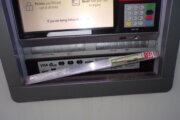Most homeowners begin with a starter home, a smaller home that needs a little TLC in a more affordable price range. But these days, starter homes are hard to come by.
Starter homes are much more expensive than they were a few years ago, and the ones that do go on the market face fierce competition. This has left many first-time buyers wondering if a starter home is worth it, and whether they should wait to purchase their forever home instead.
— What is a starter home?
— Why can’t I find an affordable starter home?
— Is it cheaper to build a starter home?
— What’s the difference between a starter home and a forever home?
— Is it worth getting a starter home?
[Read: Reasons to Buy a Condo — and Reasons to Beware]
What Is a Starter Home?
A starter home is the first home someone can typically afford to buy. Starter homes are smaller, more affordable homes that help first-time buyers get their foot in the door of homeownership.
According to Michaela Cancel, senior vice president of Neighborhood Development Company, a starter home can be a condo, townhouse or stand-alone structure with limited bedrooms and is often under 1,500 square feet. Homeowners usually live in these dwellings for three to five years or until they see a return on their investment.
“(Starter homes) typically are either new middle market construction grade units or are much older housing stock that come with substantial maintenance costs,” Cancel says. “Either way, they don’t have a lot of bells and whistles as older housing stock doesn’t reflect today’s preferences and middle market construction grade units are budget-conscious/friendly for first-time homebuyers.”
Because of the current housing market, starter homes are challenging to find and much more expensive than they were a few years ago.
“The definition of a starter home hasn’t necessarily changed; it just isn’t available in the traditional sense,” says Kurt Carlton, co-founder and president at New Western, a real estate investment marketplace. “With roughly 4 out of 5 homeowners holding onto a mortgage under 5%, no one is moving or putting their home on the market. Current mortgage rates are hovering at 7%.”
Why Can’t I Find an Affordable Starter Home?
By December 2019, the national median existing-home price for all housing types was $274,500, according to National Association of Realtors data. Since then, home prices have skyrocketed. In June 2023, NAR reported that the median existing-home sales price was $410,200 — the second-highest price ever recorded.
“In the U.S. housing market, we are lacking about 320,000 listings valued at the affordable range for middle-income buyers,” Carlton explains. “That means that what we used to call the starter home has become an endangered species.”
Carlton says that according to the NAR, households earning $75,000 per year — the median household income in the U.S. — can only afford to buy 23% of homes currently available on the market in their price range. “In a balanced market, those middle-income families should be able to afford 51% of homes available for sale,” he adds.
Cancel says new housing starts have always been significantly behind demand, but the U.S. fell even further behind in housing supply during the financial crisis of 2008 when homebuilders saw demand drop as consumers began to fear overpaying for a crashing real estate market. “The last decade saw marginal improvements in the supply-demand imbalance, but the shortage took another major hit from the pandemic,” Cancel adds.
Carlton says affordable housing is also harder to come by because there are currently 15 million vacant homes in the U.S. that need renovating to become habitable. “The good news for housing supply is that independent investors are finding these homes, fixing and flipping them in the middle-income range and getting them back on the market,” Carlton says.
Rising interest rates are another affordability challenge, Cancel says, and homeowners locked into a mortgage rate under 5% cannot afford to trade up. “And, to add insult to injury, the shortage of these resale homes on the market has caused entry-level homes to surge in value, where new homebuyers are already competing with developers paying all cash for teardowns,” Cancel explains.
[READ: What Is a Townhouse?]
Is It Cheaper to Build a Starter Home?
Prospective buyers can always build a starter home, but it can be difficult finding a company that builds more affordable homes. Data from the Census Bureau shows that 40% of homes constructed in 1980 were considered entry-level homes. In 2019, only 7% of homes were entry-level, according to a 2021 report from Freddie Mac, and almost every state is building fewer starter homes.
“Because of the cost of labor and supplies, builders are mainly focused on building more expensive homes, since it no longer makes sense for them to build more affordable homes,” Carlton says.
But there may be some good news on the horizon.
Robert Dietz, chief economist at the National Association of Home Builders, told Realtor.com in May that builders will increase their supply of entry-level homes. Still, this type of home will likely remain undersupplied.
Builders are expected to construct 6% more entry-level homes this year than last, according to the May homebuilder survey from John Burns Research and Consulting.
What’s the Difference Between a Starter Home and a Forever Home?
Unlike a starter home, which focuses on the basics, a forever home is a larger single-family home where you can see yourself living for at least 10 years, according to Zillow. Forever homes are roughly double the price of starter homes, with about 2,000 square feet of living space, three bedrooms and two bathrooms. Forever homes have more space to accommodate life-changing events like a growing family.
Homeowners in forever homes have stable jobs and like the area where they live. Forever homes don’t necessarily have to be forever, but homeowners usually don’t have any plans to move in the near future.
[READ: Should You Buy a House With Cash?]
Is it Worth Getting a Starter Home?
Prospective first-time buyers face some tough decisions. Should you buy a starter home now or save to purchase your forever home?
Buying a home instead of renting gives you the chance to build valuable equity. However, buying a home is only good if you’re in the financial position to do so. This means you need a realistic understanding of how much it costs to purchase a home, including the down payment, closing costs and ongoing costs associated with homeownership.
You can also take steps to make yourself a more creditworthy borrower, which increases your chances of securing a lower interest rate on your mortgage. Saving for a larger down payment can also reduce your monthly mortgage payment, often the biggest challenge for first-time buyers.
Carlton says that first-time buyers still want a starter home they can afford, but instead of sitting on the sidelines, they’re shifting their priorities as far as what they want in their first home.
“They are living with aging parents or with adult siblings or friends to get more house for their money and adding a mother-in-law unit to accommodate more people,” Carlton says. “The definition of a starter home is evolving and expanding to satisfy the middle-income buyer rather than changing altogether.”
More from U.S. News
How Long Does It Take to Close on a House?
How to Gather Information About a Neighborhood Before Moving
Should You Use a Buyer’s Agent?
What Is a Starter Home? originally appeared on usnews.com
Correction 08/01/23: A previous version of this story incorrectly stated the number of homes in need of repair, according to Carlton.







